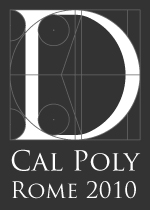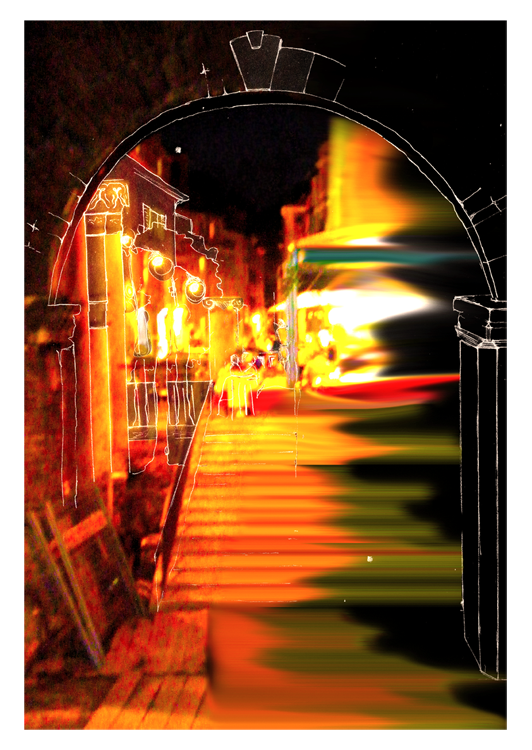Inverted Vedute
We are asked to find a frame that enables and encourages us to view the city of Rome in a different way. I understand the entire city of Rome to be a frame; a background we must reference in order to build upon it– literally and contextually. History is given to us as a truth that has already been established. While still in motion at the rate of deterioration, at this point in time I perceive history in the antiquities of Rome to be near stagnant. They now provide a more objective frame to our contemporary uses of space, as seen in the foreground of the Portico D’Ottavia. This ancient archway frames a staple of modern Roman life: late dinners in a socially and visually vibrant atmosphere, all in the immediate vicinity of millennia-old stone. The juxtaposition of the temporal quality of the framed scene and the ancient frame itself are what caught my eye in the first place. Compared to the Portico D’Ottavia and the neighboring Teatro Marcellus, these shops and ristorantes have been here a mere second; the umbrellas alone come up and down each day. The perceived stagnancy of the archway is suddenly enlivened by the lights, the people, the constant movement. Modernity, in its fleetingness and constant flux, adds a certain dynamism to the antiquity of Rome. It continually reinterprets a context that has existed for centuries upon centuries. I believe this is a way to begin to design in a city so rich in history and culture. By examining the antiquities of Rome, we must strive to deduce a new meaning for space– as that space will more likely than not be adjacent to an ancient monument. Each space has a potential performance that should mediate the relationship between a bustling, social Rome, and the enduring history that has gotten it there.

